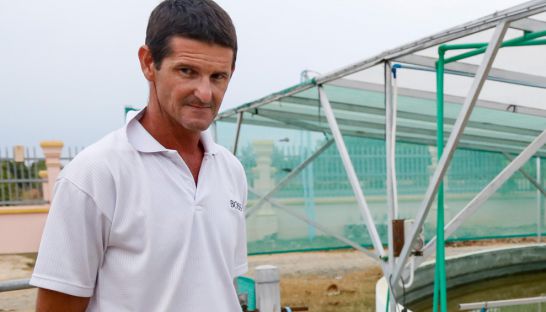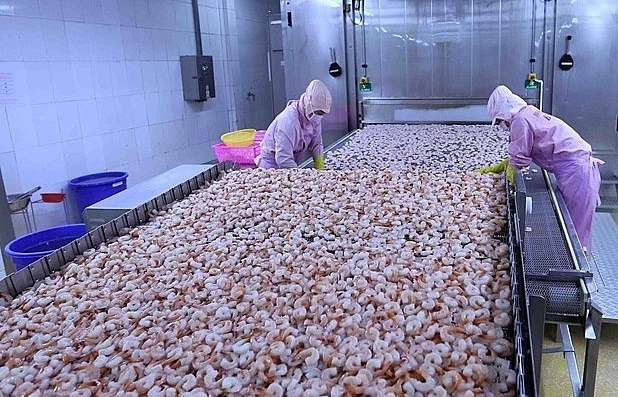Seeing green in every puddle
Seeing green in every puddle
After plans for a dairy business went sour, a New Zealand couple invested in Cambodia’s mostly untapped spirulina market, setting up Global Superfoods, which produces spirulina powder and pills for the increasingly health-conscious local and international markets. The Post’s Ayanna Runcie met with Grant Catley, co-founder of Global Superfoods, at his spirulina farm in Kandal province to discuss the company’s production and growth plans.

Why did you choose to set up spirulina production here?
We came to Cambodia to start a dairy farm, but to be honest, that didn’t work out. There was a French NGO that was growing spirulina on the side and when the dairy didn’t work, I got quite interested in it. I realised they weren’t doing it very well, so I tried to implement a few changes, but they weren’t very keen on that, so my wife and I decided to do it ourselves properly. We had a Khmer partner who had this land. We came out and looked at it and it was ideal for what we wanted to do, and with plenty of room for expansion.
What is spirulina?
It’s a single cell organism that grows in water. It basically takes in whatever you feed it, which is why all the pure water and minerals that you put in spirulina is food-grade tested with certificates so that we can guarantee the highest-quality product.
How do you grow spirulina?
We get a little bit of spirulina and put it in a 20-litre bucket. It grows, gets quite dense and becomes 200 litres, and then we can transfer that into a big tank. And it grows very quickly, especially in these temperatures. Cambodia has almost ideal conditions to grow spirulina. The rainfall is quite low – an average of 1,200 millilitres, which is not a lot – and the temperature is generally in the 33 to 37 Celsius range, which is optimum growing temperature for spirulina.
In Myanmar, where they grow it, they can only grow it for about three months, and in northern Thailand it has about a four-month growing period because below 20 Celsius is too cold.
What processing does it require?
We stir the spirulina during the daytime, but at night we don’t need to stir. The tank depth is 15 centimetres, but it only grows in the first two centimetres, and that’s why we need to agitate it, to circulate it so that it goes from the bottom to the top.
We add some minerals that control the high pH of 10.4, which is quite optimum. We also put in some other minerals, like potassium and calcium. Basically, we feed the spirulina what our bodies need. Spirulina is the highest form of protein that you can get per volume – it’s 60 to 65 per cent pill weight volume – and it has over a hundred essential minerals that the body needs.
We could harvest every day, but we do it every second day because the alternate days we make pills. We do everything from start to finish, because it gives us control and allows us to guarantee the quality of the product.
What is the market for your product?
We distribute locally and we currently export to New Zealand, Australia and Canada. At the moment we are working with a potential offshore partner that will be able to get us into the rest of Europe and the Middle East, which we hope will be a big market for us because we are halal.
We are growing every month. We started selling 50 bottles a month and we are now up to over 200. At the moment we are only exporting 20 kilos a month, but it’s growing every month.
Do you plan to expand operations?
Yes, we will be building some new tanks in the next two months. We have three tanks and will add eight more. At the moment, we have 240 square metres of production, and by the middle of next year we will have 2,200 square metres. And once we fill this land, we will buy more land. We have other spirulina-based products in the pipeline, but at this stage we are just sticking to what we’ve got. There are a lot of other things that we can do: shampoos, face washes, soaps, spirulina jellies, and spirulina rice crackers.
How do returns on spirulina compare to those of other agri-cultural crops?
There aren’t many crops in the world that you can harvest every day. Rice you have to plant and wait for it to grow and if you have a problem in between, you might not get much rice. If you put it down to a dollar value per hectare it’s very high. I used to make a lot of dollar value off of my cows producing milk, but I had 170 hectares, while here I can produce the same amount money-wise in two hectares, so in that respect it’s a very good return.














